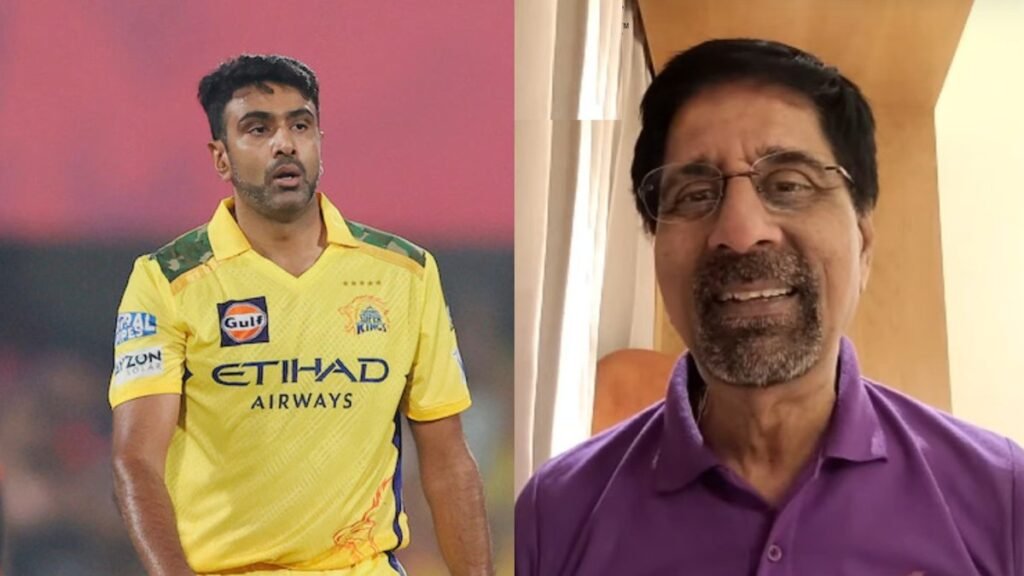
Chennai Super Kings (CSK) have experienced a mixed start to their Indian Premier League (IPL) 2025 campaign, securing a victory against Mumbai Indians but facing consecutive defeats against Royal Challengers Bangalore and Rajasthan Royals. This sequence has positioned them seventh on the points table, prompting discussions about potential strategic adjustments. Former India captain and cricket analyst Kris Srikkanth has offered specific recommendations concerning the utilization of veteran spinner Ravichandran Ashwin.
Srikkanth acknowledges Ashwin’s value to the team but suggests a tactical shift in his bowling deployment. He advises against using Ashwin during the powerplay overs, proposing instead that his skills be reserved for the middle overs, specifically between the 7th and 18th. Srikkanth believes that alongside fellow spinners Ravindra Jadeja and Noor Ahmad, Ashwin can effectively contribute during this phase, collectively covering at least ten overs. This strategy aims to capitalize on Ashwin’s experience while mitigating risks associated with the fielding restrictions of the powerplay.
In addition to the adjustments in bowling strategy, Srikkanth recommends changes to the batting lineup to strengthen CSK’s performance. He advocates for the inclusion of Devon Conway in place of Jamie Overton, aiming to bolster the top-order stability. Furthermore, he suggests bringing in Anshul Kamboj to replace Rahul Tripathi, anticipating that Kamboj’s fresh perspective could invigorate the batting approach. These changes are proposed to address the inconsistencies observed in CSK’s recent matches.
Srikkanth also emphasizes the importance of utilizing all-rounder Shivam Dube more effectively. He proposes that Dube should be included in the playing XI, rather than being limited to an impact player role. This move is intended to enhance the team’s flexibility and depth, providing additional options in both batting and bowling departments. Such a strategy could offer CSK a more dynamic approach in upcoming matches.
Reflecting on Ashwin’s performance, it’s noted that he has secured three wickets in as many matches, with an average of 33 and an economy rate of 9.90. These figures suggest that while Ashwin remains a wicket-taking option, there is room for improvement in terms of economy, particularly during the powerplay. By reallocating his overs to the middle phase of the innings, CSK could potentially enhance their bowling efficiency and apply greater pressure on opposing teams during critical periods.
As CSK prepares to face the Delhi Capitals in their next fixture, the implementation of these strategic adjustments could be pivotal. Aligning player roles with their strengths and optimizing the team’s composition are essential steps toward reversing their recent fortunes. The insights provided by seasoned experts like Srikkanth offer valuable perspectives that could influence the team’s approach and performance in the forthcoming matches.
In conclusion, Kris Srikkanth’s recommendations underscore the significance of tactical flexibility and strategic utilization of player skills. By adopting these suggestions, CSK has the opportunity to refine their game plan, address current challenges, and enhance their competitiveness in IPL 2025.

